How To Go Vegan For Beginners: A Step-By-Step Guide
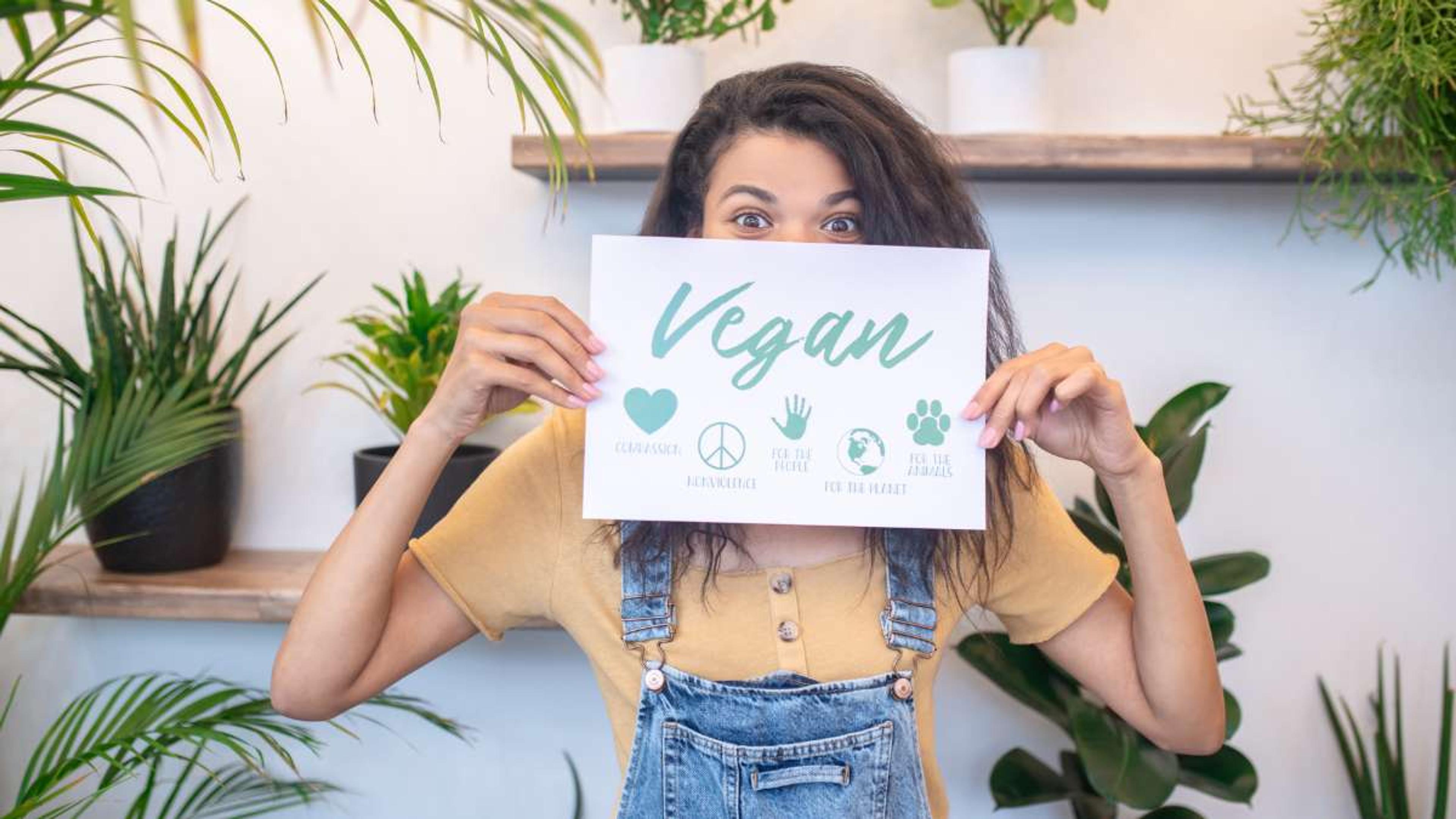
- Key Takeaways
- Understanding the Vegan Lifestyle
- Transitioning to a Vegan Diet
- Plant-Based Nutrition Essentials
- Embracing a Holistic Vegan Lifestyle
- Dining Out as a Vegan
- Finding Support and Resources
- Conclusion
- FAQs
Feeling overwhelmed by the idea of going vegan? You're not alone - many beginners find this lifestyle change both exciting and daunting. Our guide simplifies this journey into manageable steps, breaking down everything from dietary modifications to ethical considerations associated with a vegan lifestyle.
Ready for a healthier, kinder way of life? Dive in!
Key Takeaways
- Veganism is a lifestyle that excludes the consumption and use of any animal products, including meat, fish, dairy, eggs, and honey.
- Going vegan can offer numerous benefits for personal health and the planet, such as lowering the risk of heart disease and reducing harm to animals.
- When transitioning to a vegan diet, you can choose between a gradual or immediate transition. Gradual transitioning allows for sustainable and long-term change.
- There are plenty of vegan alternatives available for favorite foods like cheese, milk, meat substitutes, egg replacements, ice cream, nut butter and yogurt.
- Managing cravings involves finding vegan alternatives for favorite non-vegan foods.
- A well-planned vegan diet can provide all essential nutrients but it's important to pay attention to certain nutrients that may be lacking such as vitamin B12,Calcium,Iron,Vitamin D.The article also suggests seeking guidance from nutrition professionals if needed.
Understanding the Vegan Lifestyle
Veganism is a lifestyle that excludes the consumption and use of any animal products, including meat, fish, dairy, eggs, and honey (however, do note that a vegetarian lifestyle is slightly more flexible than a vegan lifestyle with the inclusion of eggs and dairy products). Many people choose to adopt this lifestyle for reasons such as ethical concerns regarding animal welfare or environmental sustainability.
Going vegan can offer numerous benefits for both personal health and the planet.
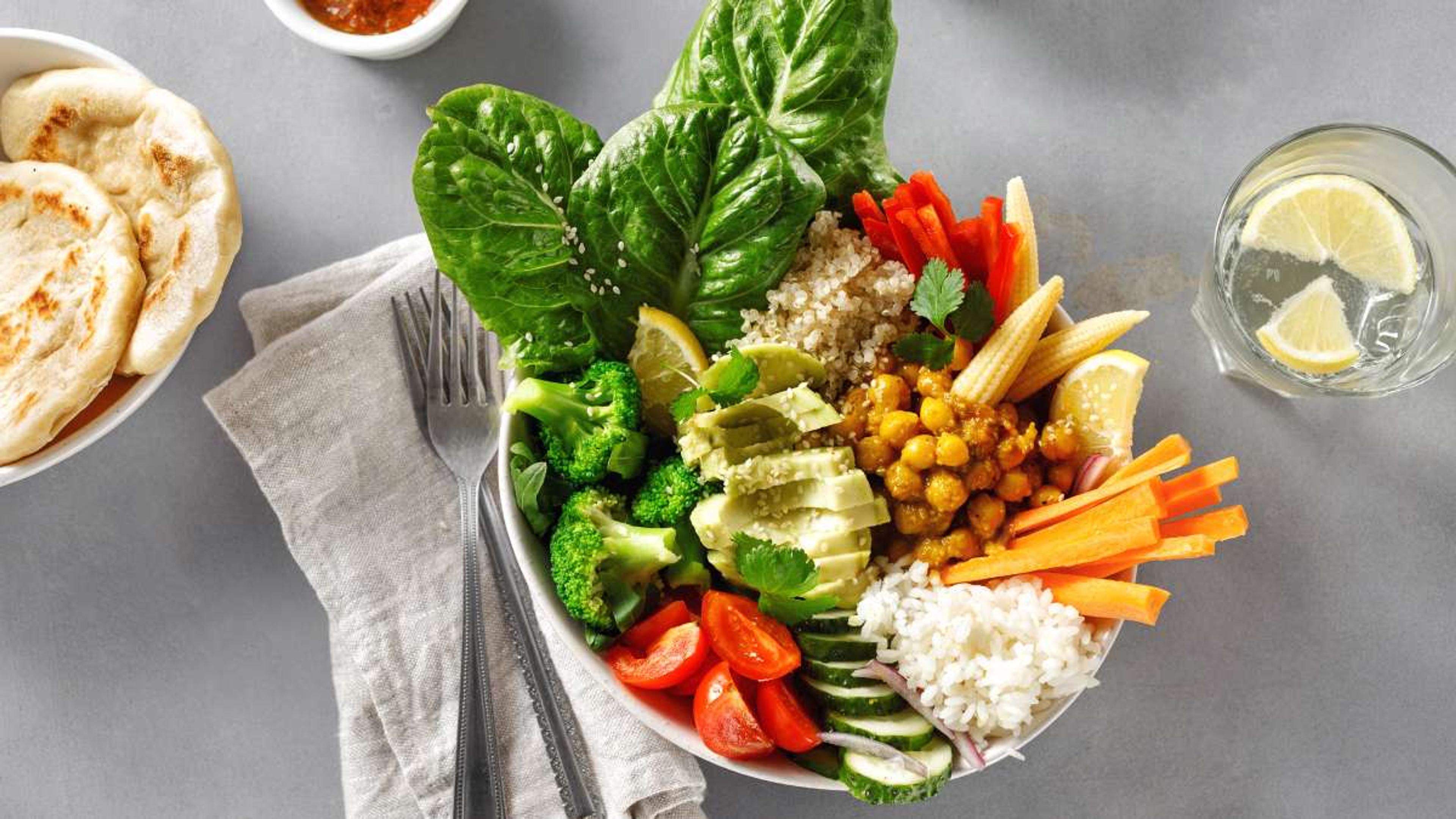
Definition of veganism
Veganism is a way of life. It's not just about what you eat. People who choose to be vegans do not use anything from animals. This means no meat, fish, eggs or dairy products like milk and cheese.
It also goes beyond food. Vegans don't wear clothes made from animal fur or leather and they don't use beauty products tested on animals. They do this because they want to stop any harm to animals.
Reasons for adopting a vegan lifestyle
Many people switch to a vegan diet for health reasons. Eating only plant-based foods can make your heart strong. It can also help you lose weight and lower your blood sugar levels.
Others want adopt a vegan lifestyle to have a positive impact on the environment, to take care of animals and the earth, so they stop eating animal products. This helps reduce harm to animals and is good for our planet too. Being vegan means choosing love for all living things above everything else.
Benefits of going vegan
Going vegan is good for your health. Your risk of heart disease goes down a lot. You also have less bad sugar levels in your blood. Foods like fresh fruits, whole grains and legumes help with this.
Vegan food is plant-based food, which means it's good for our planet too. Less trees are cut down or more often than not they are replanted, and the soil stays healthy when we eat more plants and fewer animal products. It also helps to slow down harmful gas that warms our Earth's air.
Transitioning to a Vegan Diet
When transitioning to a vegan diet, it's important to decide whether you want to make a gradual or immediate transition.
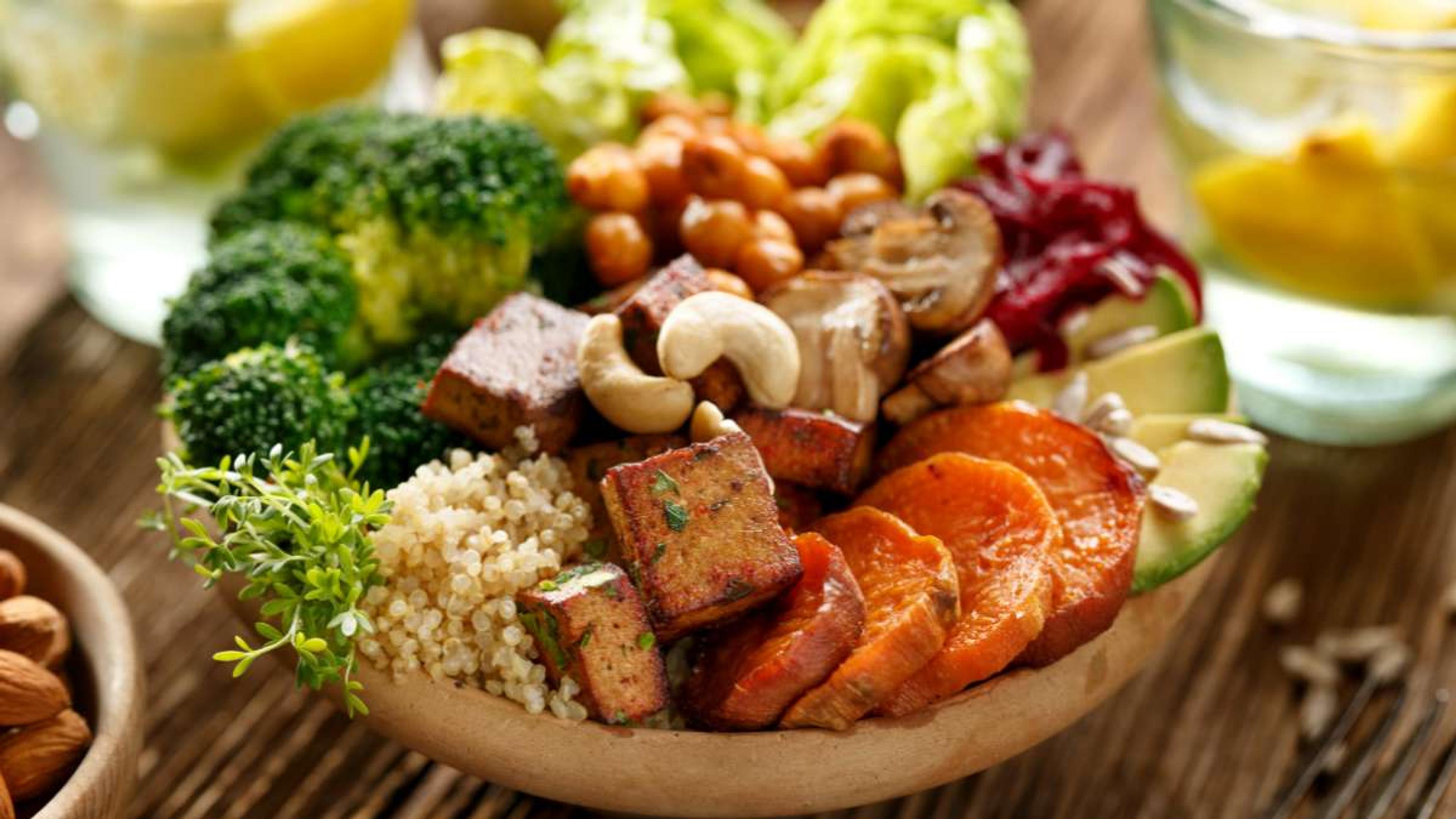
Gradual or immediate transition
Transitioning to a vegan diet can be done gradually or immediately.
Gradual transitioning allows for a more sustainable and long-term change. By making consistent and gradual changes in your diet, you are more likely to stick with it and see longer-lasting progress. Start by replacing one meal at a time with vegan options and finding plant-based alternatives for your favorite foods. This approach gives you time to adjust to the changes and discover new recipes that you enjoy.
It is also important to approach the transition with honesty and realistic expectations, understanding that it may take time for your taste buds, body and habits to adapt. Remember, everyone's journey to veganism is different, so find what works best for you.
On the other hand, immediate transition, also known as "going cold turkey," involves completely eliminating all animal products from your diet at once. This approach requires more determination and discipline, but it can lead to a quicker adjustment to your new lifestyle.
If you choose to go for an immediate transition, it would be helpful to prepare yourself mentally and physically. Educate yourself about vegan nutrition and ensure that you have a good understanding of the nutrients your body needs. This will help you make informed choices and avoid any deficiencies.
However, the down side to it is that it can be overwhelming for some people, especially if they have been consuming animal products their whole lives - in which case you would have to expect cravings for non-vegan foods from time-to-time. An immediate transition might be short-lived if you are not 100% ready for a change - but don't worry, then you would just have to take a gradual approach.
Regardless of which approach you choose, it's important to remember that going vegan is a journey and not a destination. It's about making conscious choices that align with your values and taking steps towards a more compassionate and sustainable lifestyle.
Finding vegan alternatives for favorite foods
Switching to a vegan diet doesn't mean you have to give up your favorite foods. There are plenty of vegan alternatives available that can satisfy your cravings. Here are some options to try:
- Vegan cheese: Instead of dairy cheese, opt for plant-based alternatives made from nuts or soy. These can be used in sandwiches, pizzas, and even melted on top of dishes.
- Plant-based milk: Replace cow's milk with options like almond milk, soy milk, or oat milk. They can be used in baking, cereals, smoothies, and coffee.
- Meat substitutes: You don't have to sacrifice meaty flavors. Try tofu, tempeh, seitan, or textured vegetable protein (TVP) as alternatives in stir-fries, tacos, burgers, and stews.
- Egg replacements: Use mashed bananas or applesauce as a binding agent in baked goods instead of eggs. For savory dishes like scrambled eggs or omelets, experiment with tofu scramble seasoned with spices and vegetables.
- Dairy-free ice cream: Indulge in vegan ice cream made from coconut milk or almond milk. They come in a variety of flavors and can be enjoyed just like traditional ice cream.
- Nut butter: Peanut butter is not the only option! Explore almond butter, cashew butter, or sunflower seed butter for spreads on toast or as ingredients in recipes.
- Plant-based yogurt: Swap out dairy yogurt for alternatives made from coconut milk or soy yogurt.
Meal planning and grocery shopping tips
Here are some meal planning and grocery shopping tips to help you transition to a vegan diet:
- Make a list: Before going to the grocery store, make a list of all the ingredients you need for your vegan meals. This will help you stay organized and ensure that you don't forget anything.
- Plan your meals: Take some time each week to plan out your meals in advance. This will not only save you time but also make it easier to stick to your vegan diet.
- Stock up on pantry staples: Fill your pantry with vegan essentials like cereals and grains (such as quinoa and brown rice), legumes (like lentils and chickpeas), nuts (such as walnuts), plant-based milks and seeds (like chia seeds, flaxseed). These items can be used in a variety of recipes and provide essential nutrients.
- Explore new recipes: Don't be afraid to try new recipes! There are plenty of delicious and easy vegan recipes available online that can help you discover new flavors and keep things interesting.
- Shop the perimeter of the store: When grocery shopping, focus on the fresh produce section, where you'll find fruits, vegetables, and leafy greens. These should make up a significant portion of your vegan diet.
- Read labels carefully: When buying packaged foods, make sure to read the labels and check for any non-vegan ingredients or additives. Look out for hidden animal products like gelatin or honey.
- Buy in bulk: Purchasing staple foods like beans, rice, and oats in bulk can save you money in the long run. Consider joining a wholesale club or exploring bulk food stores in your area.
- Consider frozen options: Frozen fruits and vegetables can be just as nutritious as fresh ones. They're also convenient because they have a longer shelf life, minimizing waste.
- Take advantage of seasonal produce: Seasonal fruits and vegetables tend to be more affordable and taste better. Look for local farmers' markets or community-supported agriculture programs to get your hands on fresh, local produce.
- Don't forget snacks: Stock up on vegan-friendly snacks like nuts, seeds, fresh fruit, hummus, and whole-grain crackers. Having these on hand will make it easier to resist temptations and stay satisfied throughout the day.
Managing cravings and temptations
Transitioning to a vegan lifestyle may involve managing cravings and temptations for non-vegan foods. It's important to remember that experiencing cravings is normal and should not discourage someone from becoming vegan. Here are a few use tips tips on how to manage cravings:
1. Find vegan alternatives: Instead of giving in to your cravings for non-vegan foods, try finding vegan alternatives that can satisfy your taste buds. For example, if you're craving cheese, there are plenty of plant-based cheeses available in stores or you can make your own using cashews or nutritional yeast.
2. Experiment with new flavors: One reason we crave certain foods is because we associate them with comfort or familiarity. To combat this, explore new flavors and cuisines that are naturally vegan. It's a great opportunity to discover exciting spices, herbs, and cooking techniques. Try experimenting with dishes from different cultures, such as Indian curries, Mexican tacos, or Mediterranean salads. You'll be amazed at how delicious and satisfying vegan meals can be.
3. Stay mindful and present: Cravings often arise when we're not fully present in the moment. Take a moment to pause and ask yourself if you're genuinely hungry or if it's just a passing craving. Engaging in mindful eating can help you develop a deeper connection with your food and make conscious choices that align with your vegan values.
4. Seek support and community: Going vegan is easier when you have a support system in place. Connect with like-minded individuals who can offer guidance, share delicious recipes, and provide a listening ear when cravings strike. Join online vegan communities or attend local meet-ups to meet fellow vegans and gain inspiration from their journeys. Having a support network can make the transition to a vegan lifestyle feel less daunting and more enjoyable.
5. Plan your meals ahead: Cravings often hit when we're unprepared and hungry. To avoid giving in to temptation, take some time each week to plan your meals in advance. Stock your pantry with nutritious vegan staples.
By adopting the right mindset and implementing strategies to manage cravings, one can successfully navigate the challenges of embracing a vegan lifestyle.
Find vegan substitutes for meat, fish, dairy, eggs, and honey
Going vegan means finding substitutes for meat, fish, dairy, eggs, and honey. Here are some options:
- Meat substitutes: tofu, tempeh, chickpeas, lentils
- Fish substitutes: seaweed (nori), tofu-based fish alternatives
- Dairy substitutes: almond milk, soy milk, coconut milk, oat milk
- Egg substitutes: applesauce, mashed bananas, flaxseed meal mixed with water
- Honey substitutes: agave nectar, maple syrup, coconut honey
Dealing with social situations
Going vegan can sometimes be challenging when it comes to social situations. People may not always understand or respect your choice, and you might face some criticism or questions about your decision.
It's important to stay strong and confident in your reasons for going vegan. Surrounding yourself with supportive individuals who understand and respect your lifestyle can make a big difference.
Remember that you're doing this for yourself, the animals, and the planet. Stay true to your values and don't let others discourage you from living a compassionate life.
Plant-Based Nutrition Essentials
Discover the essential nutrients in a vegan diet, including protein sources from plants and plant-based fats and carbohydrates. Learn how to use supplements and fortified foods for optimal nutrition.
Read more to embrace a healthier, holistic vegan lifestyle.
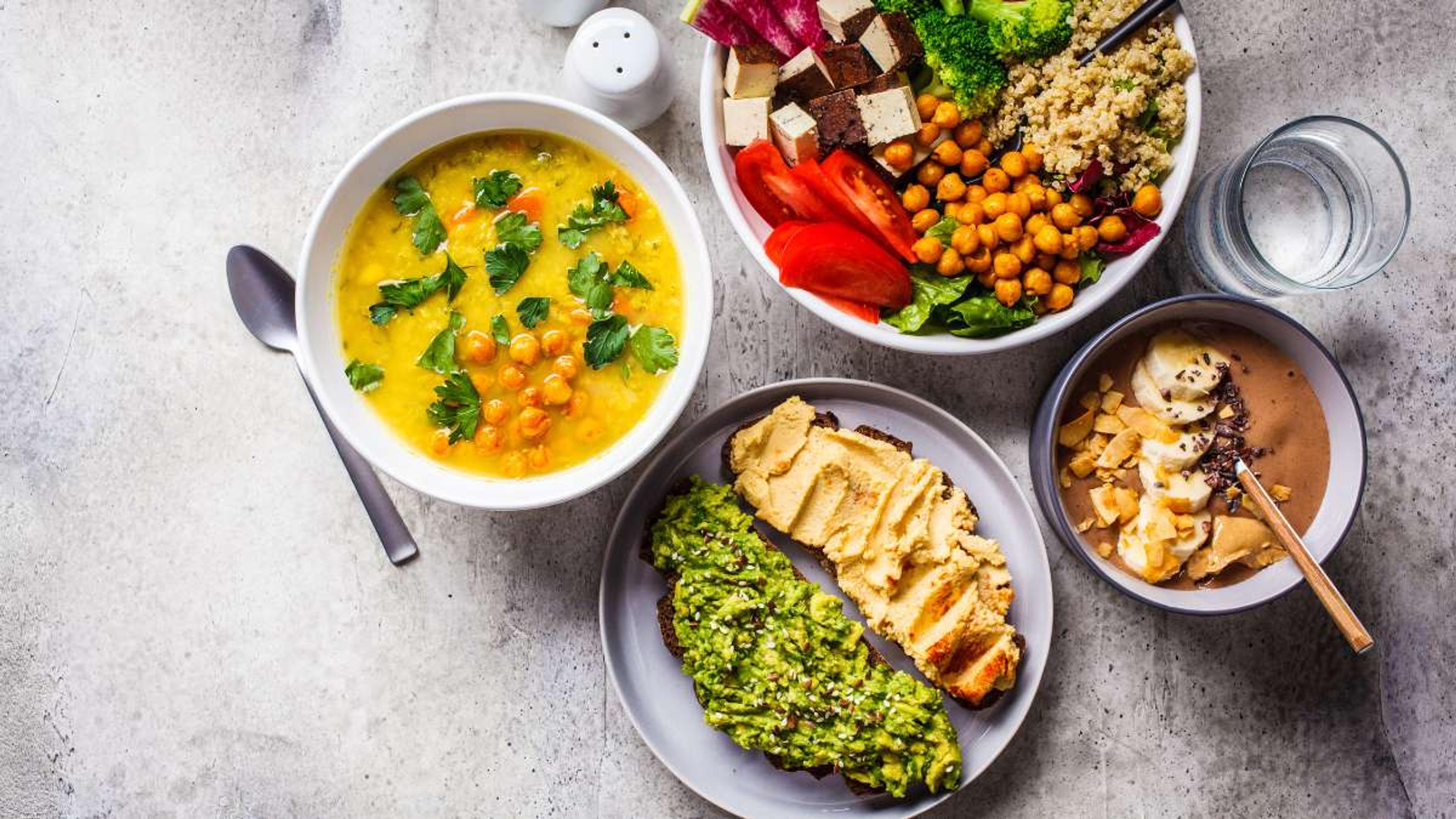
Essential nutrients in a vegan diet
A vegan diet can provide all the essential nutrients you need, but it's important to pay attention to certain nutrients that may be lacking. Vitamin B12, calcium, iron, and vitamin D are some of these key nutrients.
Vegans can get vitamin B12 from fortified foods or supplements since it is mainly found in animal products. Sources of calcium include fortified plant milks, tofu, tempeh, and leafy greens like spinach.
Iron can be obtained from legumes, whole grains, nuts and seeds such as lentils and quinoa. Vitamin D can be obtained from fortified plant-based milks or by spending time in sunlight.
Protein sources from plants
Plant-based diets can provide ample protein through a variety of sources. Soybeans and soy products, such as tofu and tempeh, are excellent options that offer all nine essential amino acids.
Beans and legumes, like lentils, chickpeas, and black beans, are also packed with protein. Including these foods in your meals ensures you get the nutrients you need while following a vegan lifestyle.
Plant-based fats and carbohydrates
Plant-based fats and carbohydrates are important components of a vegan diet. Unlike saturated and trans fats, which are found in animal products, plant-based fats are healthier choices that can help improve heart health.
These fats, such as those found in avocados, nuts, and seeds, are low in calories and can be used as alternatives to dairy products or meat-based fats. Carbohydrates from plant sources like whole grains, fruits, and vegetables provide essential nutrients and energy.
Including these foods in your meals can help you meet your nutritional needs while transitioning to a vegan lifestyle. So next time you're planning your meals, don't forget to incorporate plant-based fats and carbohydrates for a balanced diet!
Using supplements and fortified (if necessary)
To ensure that you're getting all the essential nutrients on a vegan diet, supplements can be helpful. One important supplement for vegans is vitamin B12, which is mainly found in animal products.
Vegans may need to take a B12 supplement or consume fortified foods like breakfast cereals. Other nutrients like vitamin D, zinc, and calcium can also be lacking in a vegan diet, so it's important to consider supplementation for those as well.
Nutritional gaps can easily be filled by taking vegan supplements and consuming fortified foods if necessary.
Embracing a Holistic Vegan Lifestyle
Extend the principles of veganism beyond food by exploring cruelty-free cosmetics and clothing options.
Extending vegan principles beyond food
Veganism goes beyond just what we eat. It's about living a lifestyle that avoids harm to animals in all aspects of life. This means choosing cruelty-free cosmetics and clothing made without animal products or testing on animals.
By embracing a holistic vegan lifestyle, we can contribute to the goal of ending the exploitation of animals and promoting compassion for all creatures. Veganism not only benefits animals but also provides us with health benefits such as lower blood pressure, cholesterol levels, and reduced risk of heart disease.
Exploring cruelty-free cosmetics and clothing
Exploring cruelty-free cosmetics and clothing is an important aspect of embracing a vegan lifestyle. Vegan cosmetics are made with natural ingredients and contain fewer synthetic chemicals, which helps reduce the release of potentially toxic substances into the environment.
Choosing cruelty-free products means avoiding those that have been tested on animals. By opting for vegan cosmetics and clothing, you contribute to preventing animal exploitation and reducing their suffering.
This aligns with the principles of veganism, which go beyond just food choices. So, when shopping for beauty products or clothes, look out for labels indicating that they are cruelty-free and free from animal-derived materials like fur, leather, wool, or silk.
Dining Out as a Vegan
When dining out as a vegan, it is important to research vegan-friendly restaurants in advance and navigate menus to find suitable options.
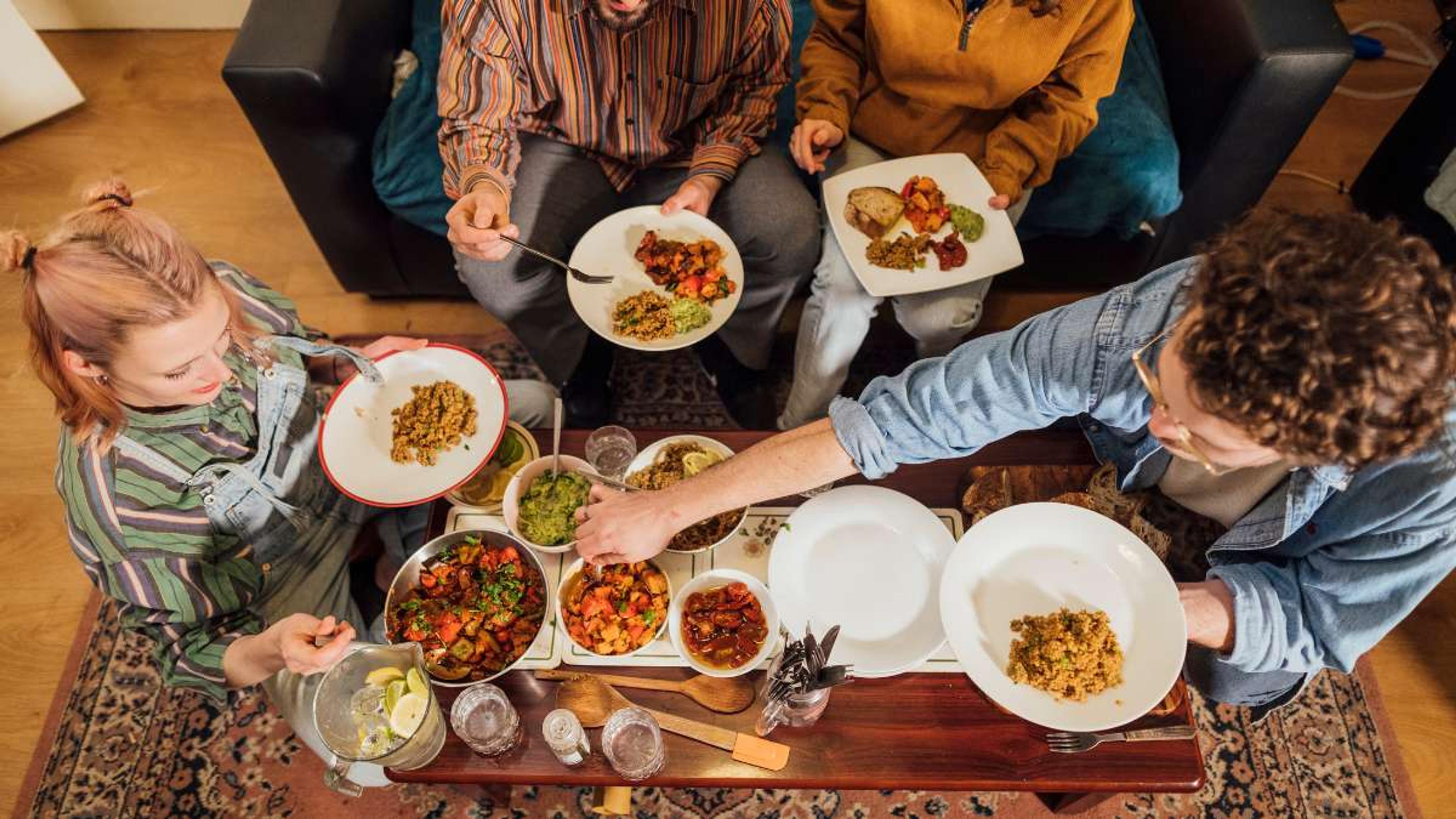
Researching vegan-friendly restaurants
To find vegan-friendly restaurants, follow these tips:
- Use Happy Cow Website: This website is a useful resource for finding vegan-friendly restaurants in your area.
- Plan ahead: Before dining out as a vegan, it's recommended to look up restaurant menus online. This way, you can see if they offer any vegan options.
- Call the restaurant: If you're unsure about the availability of vegan options, give the restaurant a call and ask about their menu. They can provide information on any plant-based dishes they offer.
- Research saves time: By researching restaurants beforehand, you can save time and ensure a stress-free dining experience as a vegan.
- Utilize Google Maps: Google Maps can be a helpful tool for finding vegan-friendly places near your location. It provides ratings, reviews, and even photos to help you make an informed decision.
Navigating menus and requesting vegan options
- Check the menu beforehand to see if there are any vegan options available.
- If there aren't any options listed, don't be afraid to ask the server if they can make a dish vegan - friendly.
- Be clear about what being vegan means and what ingredients to avoid, such as dairy, eggs, and meat.
- Politely request any modifications or substitutions that would make a dish suitable for a vegan diet.
- Suggest specific ingredients or dishes that can easily be made vegan, such as replacing cheese with avocado in a salad or using plant-based milk in a coffee.
- Don't be discouraged if the restaurant is unable to accommodate your request; thank them for their effort and consider looking for another restaurant with more vegan options.
- If dining with non-vegan friends or family, try to choose restaurants that offer both vegan and non-vegan options to make everyone happy.
Tips for dining with non-vegan friends and family
When dining with non-vegan friends and family, it's important to be open-minded and adaptable. Respect their dietary choices while still sticking to your vegan principles. Before going out to eat, do some research on vegan-friendly restaurants in the area.
Check online reviews or ask fellow vegans for recommendations. When at a restaurant, don't hesitate to speak up and ask about vegan options or modifications to existing dishes. Calling the restaurant ahead of time can also help ensure they can accommodate your dietary preferences.
If you're eating at a friend's house, politely communicate your dietary restrictions and offer to bring a vegan dish that everyone can enjoy. Remember that mistakes happen, so if a restaurant accidentally serves you something non-vegan, address the issue calmly and clearly without getting upset or angry.
Also avoid saying: "You're killing animals with your food choices" or "How can you eat that, it's so cruel." Instead, focus on sharing the positive aspects of veganism, such as the health benefits or the positive impact on the environment. Lead by example and show them that vegan food can be delicious and satisfying.
Finding Support and Resources
Joining online vegan communities, following vegan influencers and bloggers, and seeking guidance from nutrition professionals are all great ways to find support and resources on your vegan journey.
Read more about these valuable sources of information and inspiration in our comprehensive guide!
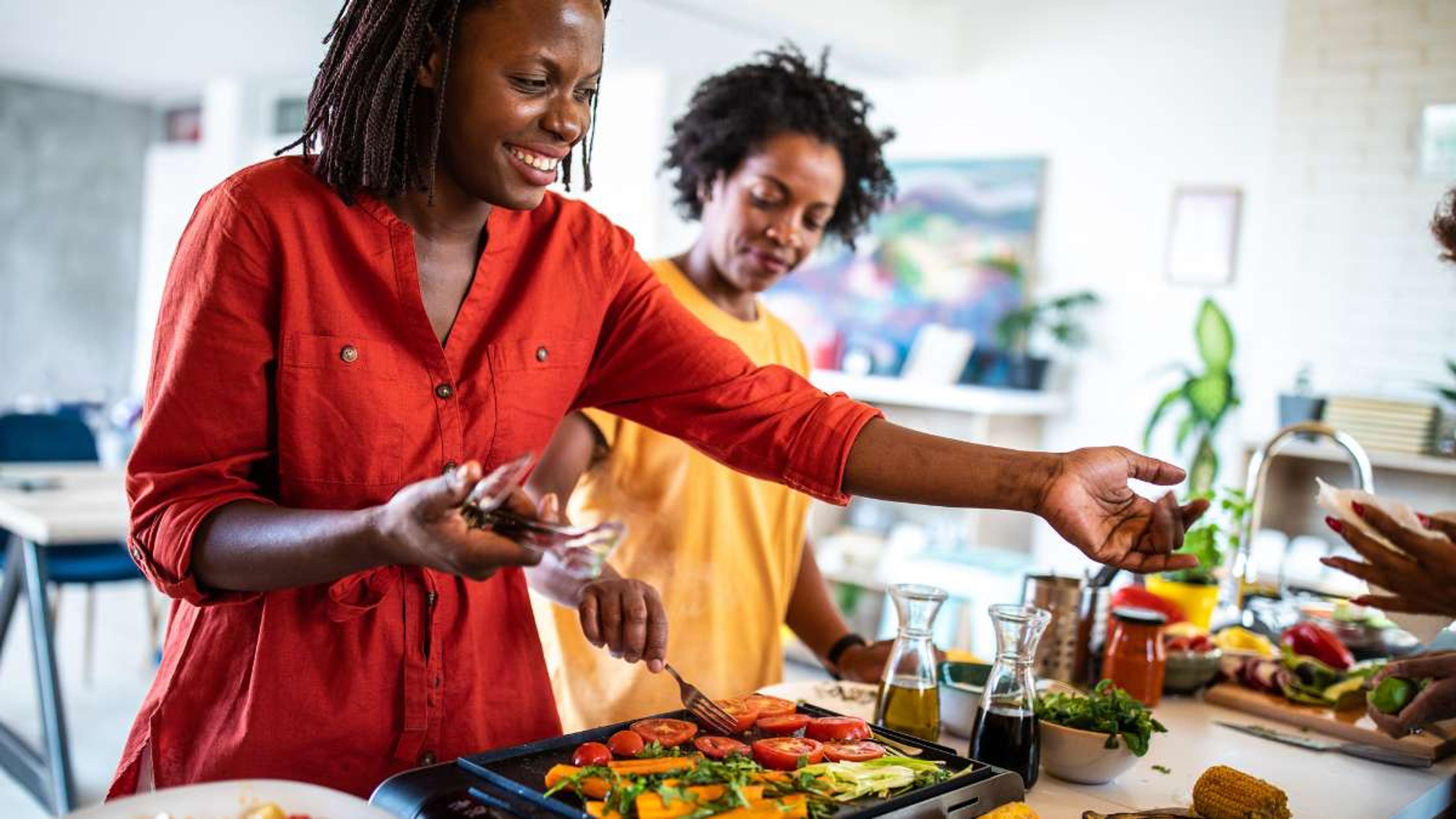
Joining online vegan communities
Joining online vegan communities is a great way for beginners to find support and resources on their vegan journey. Here are some platforms where individuals can connect with other vegans and seek guidance:
- Vegan Facebook groups: These groups provide a platform to connect with vegans from around the world, ask questions, share experiences, and find information about vegan-friendly restaurants.
- Reddit communities: There are various vegan subreddits where individuals can join discussions, ask questions, and seek advice on transitioning to a vegan lifestyle.
- The Vegetarian Resource Group (VRG): This non-profit organization offers vegetarian nutrition information, recipes, books, and a magazine. They also have an active community where individuals can connect with like-minded people.
- Vegan.com: This website provides comprehensive information on different aspects of veganism, including nutrition, animal protection, and food politics. It serves as a valuable resource for those looking to understand and adopt a healthy, plant-based lifestyle.
- Veganuary: Participating in Veganuary allows individuals to join the plant-based revolution and receive guidance and support throughout their 31-day vegan challenge. It has inspired over 2.5 million people since 2014.
Following vegan influencers and bloggers
- Vegan influencers and bloggers can be a valuable source of support and information for beginners on their vegan journey.
- They often share personal stories, tips, recipes, and product recommendations to inspire and educate others.
- Following vegan influencers on social media platforms like Instagram allows beginners to access a wide range of content at their fingertips.
- Michaela Veis, also known as @elavegan, is one example of a popular vegan influencer who shares delicious plant-based recipes and informative posts.
- These influencers can provide guidance on finding vegan - friendly restaurants, navigating menus, and dealing with social situations as a vegan.
- They may also recommend other resources such as books, documentaries, or websites that can help beginners to learn more about veganism.
- By following these influencers and bloggers, beginners can stay motivated and connected to a supportive community throughout their vegan journey.
Seeking guidance from nutrition professionals
If you're new to the vegan lifestyle, it can be helpful to seek guidance from nutrition professionals. Registered dietitians who specialize in vegan diets can provide valuable support and advice to beginners.
They have the knowledge and expertise to help ensure that your transition to a vegan diet is healthy and balanced.
Working with a nutrition professional can help you understand your nutritional needs as a vegan and how to meet them through plant-based sources. They can also provide customized meal plans, offer suggestions for vegan alternatives, and address any concerns or questions you may have about going vegan.
By seeking guidance from nutrition professionals, you'll receive personalized support that aligns with your health goals and helps make your journey into veganism successful and sustainable.
Conclusion
Going vegan as a beginner may seem challenging, but with the right information and support, it can be an exciting journey. By gradually transitioning to a plant-based diet, finding delicious vegan alternatives, and embracing the holistic principles of veganism, beginners can successfully go vegan.
Remember to seek guidance from nutrition professionals, join online communities for support, and explore resources like easy recipes and restaurant options. Going vegan not only benefits your health but also contributes to animal welfare and the environment.
Take the first step towards a compassionate lifestyle today!
FAQs
1. Is it difficult to go vegan for beginners?
Going vegan may be challenging at first, but with proper planning and resources, it can be a manageable transition.
2. What foods can I eat as a beginner vegan?
As a beginner vegan, you can enjoy a variety of plant-based foods such as fruits, vegetables, whole grains, legumes, nuts, and seeds.
3. How do I get enough protein on a vegan diet?
Getting enough protein on a vegan diet is possible by including plant-based sources such as beans, lentils, tofu, tempeh, quinoa, and nuts in your meals.
4. Can I still eat out at restaurants as a beginner vegan?
Yes! Many restaurants now offer vegan options or are willing to make modifications to dishes. It's helpful to research menus beforehand or ask restaurant staff for suitable alternatives.

